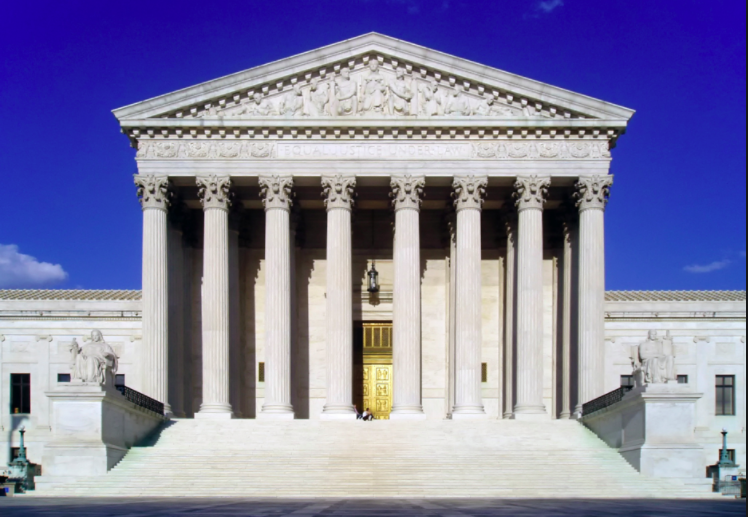The Supreme Court Tips its Hand on Travel Ban 3.0
In a pair of unsigned orders, the Supreme Court today allowed the third iteration of President Trump’s travel ban to go into complete effect. Only Justices Ginsburg and Sotomayor noted their dissent. While it is risky to read too much into entries on the Court’s so-called “shadow docket,” four issues are worth addressing.

Published by The Lawfare Institute
in Cooperation With

In a pair of unsigned orders, the Supreme Court today allowed the third iteration of President Trump’s travel ban to go into complete effect. Only Justices Ginsburg and Sotomayor noted their dissent. While it is risky to read too much into entries on the Court’s so-called “shadow docket,” four issues are worth addressing.
First, the timing of these orders is significant. The briefing on the government’s application for a stay in both appeals concluded on Thursday, Nov. 30, 2017. Illustrating the urgency of the matter, less than four days later—without waiting for an intervening conference—the Justices rendered their decision. Because the lower courts had halted the policy before it ever went into effect--and no one was being denied entry--the only conceivable exigency was to allow the President to exercise his authority as soon as possible. Moreover, the opinion was issued right before the Ninth and Fourth Circuit Courts of Appeals were to hear oral arguments, on Dec. 6 and 8, respectively. (I will be attending the latter in Richmond). Had the Court denied the stay in advance of arguments, the lower courts would have been on notice that the government is not likely to succeed on the merits, so a decision against the President would likely stand. Here, however, the contrary signal to the inferior courts is unmistakable. Finally, with respect to timing, the Court noted that “we expect that the Court of Appeals will render its decision with appropriate dispatch.” Translation: decide the case by the end December, so we can grant certiorari in January, hear arguments in March, and decide the case by the end of June. (This is the quickest possible pace under the Court’s regular order).
Second, the Court’s order was completely perfunctory. Unlike the thirteen-page order that allowed the second iteration of the policy to go into partial effect, today’s 150-odd word order offered no analysis whatsoever. Considering the blithe comparisons of the policy to President Roosevelt’s detention of Japanese-Americans, it is striking that the Supreme Court did not deem it necessary to even explain its decision. Indeed, neither Justices Ginsburg or Sotomayor felt the occasion to write a dissent—a reflection that this case may not be quite as dire to the Justices as some advocates suggest. To be sure, time was short, but the Justices and their clerks knew this issue was percolating to the top. Both of these Justices have issued published dissents for last-minute appeals on executions; certainly a separate writing could have been drafted in advance. None of this happened.
Third, the Court’s decision irreparably, and likely permanently, alters the status quo. President Trump can now begin implementing the third, and final iteration of his travel policy. Certain aliens from six majority-Muslim nations will now be denied entry, and where warranted, will not be able to apply for visas. It is certainly possible that in June 2018, three Justices will have a change of heart, and join Justices Ginsburg and Sotomayor in holding that the policy should be halted; but that seems increasingly unlikely. Moreover, as I noted at SCOTUSBlog, “[a]s a general rule, when Justice Anthony Kennedy does not dissent from the grant of a stay and certiorari is granted, the lower court will not stand.” That there were only two dissents suggests that the government will prevail.
Fourth, while this order is in no respect a resolution on the merits, it does severely undermine one of the plaintiffs’ leading arguments: that Travel Ban 3.0 is still tainted by the animus that motivated Travel Ban 1.0. My analysis on SCOTUSBlog concerning the second iteration applies with even greater force to the more attenuated third iteration:
If the 4th Circuit is correct that the entire executive order is tainted by unconstitutional animus, then the government’s interest in enforcing it as to all aliens would indeed be nonexistent. The government has no interest in implementing an unconstitutional policy, even if certain parties lack standing to challenge it. Likewise, if the 9th Circuit was correct that the entire executive order was unlawful because the president lacked the statutory authority to promulgate it, then the government’s interest in enforcing the order as to all aliens would also be nil. The government cannot act unlawfully, even if other parties lack standing to challenge the government’s action. The Supreme Court’s per curiam decision, which allows the order to be enforced against some aliens, does not support either conclusion.
As a footnote to the fourth point, hours before the Court issued its decision, the ACLU submitted a letter highlighting the President’s recent tweets as “changed circumstances” that should affect the outcome of the case. This pleading did not have any apparent impact on the resolution of the stay. It is increasingly doubtful that Twitter will provide the rule of decision at the Supreme Court.
At bottom, the Court’s sober, sterile and swift opinion is a victory for the Trump Administration. The judges on the courts of appeals should study this order long and hard before issuing another blockbuster opinion that deprives the Executive Branch of the “presumption of regularity” to which it is entitled.



.jpg?sfvrsn=676ddf0d_7)

